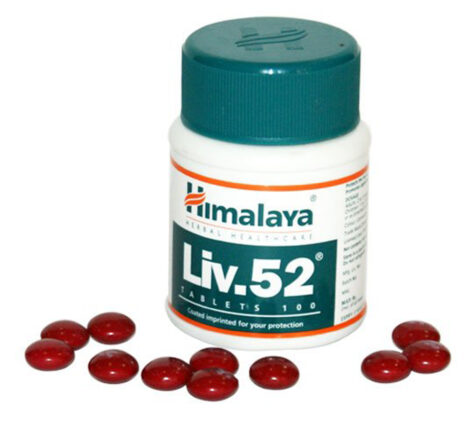Idea-expression dichotomy in computer programs
OVERVIEW
The quintessence of copyright law is in protecting the expression of an idea. An iron-clad limitation is not to limit the continuity of thinking creatively due to the fear of infringing that expression. Copyright law finds its balance in granting exclusive rights to authors and at the same time not giving any to mere ideas. An idea can be produced or incorporated into a tangible medium in various ways. This is why it is the end product of that idea that is protectable and not the idea itself. However, there may be only one possible way to make/create that end product. The court, in such cases, does not find the expression copyrightable under the Doctrine of Merger. Now the question arises, what is the doctrine of ‘idea-expression dichotomy’? For instance, one of the most popular versions of the Cinderella story was initially published in 1697 by Charles Perrault[1]. Since then, there have been hundreds if not more versions and adaptations of the book into other literary works such as a cinematograph film, the most recent one being ‘Cinderella’ movie starring actress Camila Cabello. It is not considered an infringement because it is a protected expression under copyright and not the idea per se. This is known as the doctrine of idea-expression dichotomy. The landmark case of R.G Anand v. Delux films & Ors[2]discussed the jurisprudential aspect of the idea-expression dichotomy for the first time in India.
COMPUTER SOFTWARE: MEANING & COPYRIGHTABLILTY
Computer software is a product of time, skill, and monetary cost. Just like other subject matter worth copying, computer software is also prone to piracy. Copyright is one of the ways to prevent such piracy. Computer software can be stored in a tangible medium such as RAM[3] & ROM[4] chips, hard drives, etc. Software is a blanket term for computer programs (hereinafter, referred to as programs), databases, user interfaces, and documents[5].
In this article, we will be dealing with the problem of idea-expression dichotomy in computer programs. Programs are instructions fed to a computer to perform routine internal operations essential for all users to operate it (Operating systems) or for a computer to execute a specific task when engaged by a user (Application Programs). A program can be bifurcated into literal elements and non-literal elements for copyright protection. Literal elements consist of the source code, i.e., the instructions written in human-readable programming languages such as Java, C++, etc. Once this source code is converted to machine-readable language in a binary system, it is known as object code. But the matter is that it is not the literal elements that pave the way to difficulty in drawing a line between idea and expression. It is the non-literal elements such as display screens, structures, organization, etc.
EVOLUTION OF DOCTRINE
U.S.A
Identifying the expression from an underlying idea is no easy task. Over the years, courts have laid several tests to determine the limits to which non-literal elements such as Structure, sequence, and organization of programs (SSO)[6] can be considered expressions and given copyright protection. In the Wheelan[7] case, the Court opined that copyright extends to non-literal elements in literary work. The computer program, being a literary work, should be given the same scope. Further, the Court observed that the function of a program is considered to be the underlying idea and everything apart from it forms part of the expression. However, the author of the copyrighted work felt that the judgment was inclined more towards the author’s monopoly rights than striking a balance between competition and monopoly.
After debating over the scope of protection of non-literal elements, courts are finally approaching a more delicate and efficient way to separate ideas and expression. As per the Altai Test[8], a program is broken into each component, and then the court analyses each component for its very own unprotectable ideas and protectable expressions. This test is famously known as the extraction or comparison test. The courts have gone from granting protection to menu command structures[9] to not granting one for the location of a menu bar[10].
India
In R.G Anand[11], the Court held that even if a few similarities between two expressions stemmed from the same idea, the dissimilarities require more attention since copyright cannot protect ideas. Furthermore, in Anil Gupta’s [12] Case, the Hon’ble Delhi High Court has held that where the concept itself has evolved due to the efforts and skill of a party, then in such circumstances, even ideas can be copyrighted. In the first instance, this judgment contradicted the Doctrine of Merger. Still, such evolution is pertinent with the growing commercialization and technological development where infringers can change one step and make umpteen amounts of copyrightable material based on the same idea. However, this can prove disastrous to software-specific innovations as well.
CONCLUSION
The legal position on the doctrine of idea-expression dichotomy is ever-changing and dynamic. The courts have been applying the hit and trial method, resulting in the evolution of this doctrine. It is undoubtedly an essential doctrine for the copyright protection and enforcement of software programs. There is a thin line separating an idea and the expression it manifests into. There are so many variables in granting copyright protection to computer programs as opposed to other subject matters. The technical material, coding languages, novel facts, and concepts result in contradictory judgments across various jurisdictions. To conclude, it is essential to teach definitions of ‘idea’ & ‘expression’ with respect to computer software in the Copyright Act, 1957[13].
References: [1] https://www.britannica.com/biography/Charles-Perrault [2] AIR 1978 SC 1613 [3] Abbreviation for Random Access Memory [4] Abbreviation for Read-Only Memory [5] https://www.sgrlaw.com/briefings/474/ [6] https://www.sgrlaw.com/briefings/474/ [7] Whelan Association Inc. V. Jaslow Dental Laboratory, (1986) 797 F.2d 1222 (3rd Cir.) [8] Computer Associates International Inc. V. Altai, Inc, 982 F.2d 693 (2d Cir. 1992) [9] Lotus V. Paperback, (1990) 740 F. Supp 37. U.S District Court [10] Productivity Software International Inc. V. Healthcare Technologies, Inc, 37 U.S.P.Q.2d (BNA) 1036 (2d Cir.1995) [11] Supra 1 [12] Anil Gupta v. Kunal Dasgupta, AIR (2002) Delhi 379 [13] https://copyright.gov.in/documents/copyrightrules1957.pdf
Authored by: Rakshita Singh, Army Law College, Pune
Disclaimer: This article is intended to provide general guidance to the subject matter. For any specific advice/corrections, write to [email protected]




